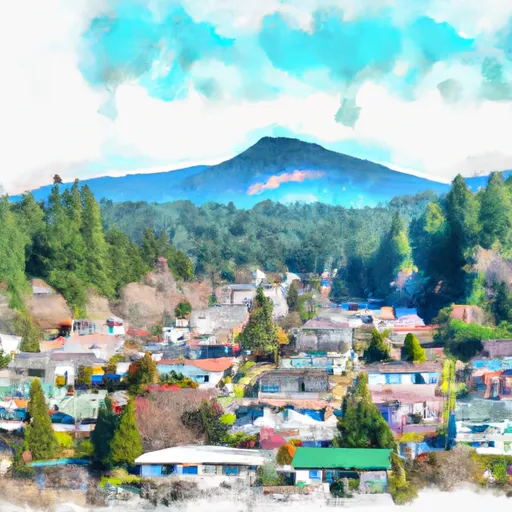-
 Snoflo Premium
Snoflo Premium
Get unlimited access to all our content
With no Ad interruptions! - Start Your Free Trial Login with existing account
Quilcene
Eden Index
Climate
8.1
•
Recreation
7.6
•
Community
3.4
•
Safeguard
6.8/10

Quilcene is a charming town located in Jefferson County, Washington. With a mild coastal climate, it experiences cool summers and mild winters. The area receives abundant rainfall throughout the year, contributing to its lush green landscapes and rich hydrology.
Quilcene is nestled amidst the Olympic Mountains and is surrounded by pristine rivers, creeks, and lakes. The main hydrology constituents in the area include the Big Quilcene River and the Little Quilcene River, both offering excellent opportunities for fishing and kayaking. Hiking enthusiasts can explore numerous trails, such as the Buckhorn Wilderness Trail and the Mount Townsend Trail, which provide stunning views of the surrounding mountains and forests.
Outdoor recreation opportunities in Quilcene are plentiful. The nearby Olympic National Forest is a haven for camping, birdwatching, and wildlife spotting. The Dosewallips State Park offers picturesque beaches, hiking trails, and fishing spots. Additionally, the Quilcene National Fish Hatchery provides educational experiences and the chance to see salmon spawning.
With its favorable climate, beautiful hydrology, and abundant outdoor recreational opportunities, Quilcene is a hidden gem for nature enthusiasts and those seeking a tranquil escape.
What is the Eden Index?
The Snoflo Eden Index serves as a comprehensive rating system for regions, evaluating their desirability through a holistic assessment of climate health, outdoor recreation opportunities, and natural disaster risk, acknowledging the profound impact of these factors on livability and well-being.
Climate Health Indicator (CHI): 8.1
Quilcene receives approximately
1111mm of rain per year,
with humidity levels near 82%
and air temperatures averaging around
11°C.
Quilcene has a plant hardyness factor of
8, meaning
plants and agriculture in this region tend to thrive here all year round.
By considering the ideal temperature range, reliable water supplies, clean air, and stable seasonal rain or snowpacks, the Climate Health Indicator (CHI) underscores the significance of a healthy climate as the foundation for quality living.
A healthy climate is paramount for ensuring a high quality of life and livability in a region, fostering both physical well-being and environmental harmony. This can be characterized by ideal temperatures, reliable access to water supplies, clean air, and consistent seasonal rain or snowpacks.
Weather Forecast
Streamflow Conditions
Puget Sound
Area Rivers
Puget Sound
Snowpack Depths
Puget Sound
Reservoir Storage Capacity
Puget Sound
Groundwater Levels
Recreational Opportunity Index (ROI): 7.6
The Recreational Opportunity Index (ROI) recognizes the value of outdoor recreational options, such as parks, hiking trails, camping sites, and fishing spots, while acknowledging that climate plays a pivotal role in ensuring the comfort and consistency of these experiences.
Access to outdoor recreational opportunities, encompassing activities such as parks, hiking, camping, and fishing, is crucial for overall well-being, and the climate plays a pivotal role in enabling and enhancing these experiences, ensuring that individuals can engage in nature-based activities comfortably and consistently.
Camping Areas
| Campground | Campsites | Reservations | Toilets | Showers | Elevation |
|---|---|---|---|---|---|
| Seal Rock | 41 | 228 ft | |||
| Falls View | 30 | 321 ft | |||
| Fort Flagler State Park | None | 100 ft | |||
| Fort Casey State Park | 35 | 11 ft | |||
| Quilcene County Park | None | 63 ft | |||
| Kitsap Memorial State Park | 40 | 46 ft | |||
| Sequim Bay State Park | 65 | 72 ft | |||
| Jefferson County Fairgrounds | 80 | 17 ft | |||
| Fort Worden State Park | 80 | 173 ft | |||
| Fort Townsend State Park | 40 | 247 ft |
Nearby Ski Areas
Catastrophe Safeguard Index (CSI):
The Catastrophe Safeguard Index (CSI) recognizes that natural disaster risk, encompassing floods, fires, hurricanes, and tornadoes, can drastically affect safety and the overall appeal of an area.
The level of natural disaster risk in a region significantly affects safety and the overall livability, with climate change amplifying these risks by potentially increasing the frequency and intensity of events like floods, fires, hurricanes, and tornadoes, thereby posing substantial challenges to community resilience and well-being.
Community Resilience Indicator (CRI): 3.4
The Community Resilience Indicator (CRI) recognizes that education, healthcare, and socioeconomics are crucial to the well-being of a region. The CRI acknowledges the profound impact of these elements on residents' overall quality of life. By evaluating educational resources, healthcare accessibility, and economic inclusivity, the index captures the essential aspects that contribute to a thriving community, fostering resident satisfaction, equity, and social cohesion.

